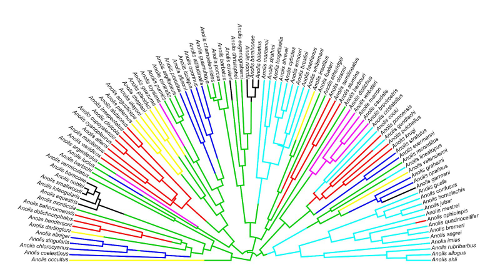Quantitative Bioscience at the University of Tennessee
Quantitative Phylogenetics

Quantitative phylogenetics deals with the reconstruction of evolutionary relationships between species using morphological or molecular data. There exists a multitude of quantitative methods for phylogenetic reconstruction. These methods are applied to phylogenetic analysis with the goal to assemble a phylogenetic tree representing a hypothesis about evolutionary ancestry of a set of genes, species or other taxa.
| Researcher | Department | Research Interests | |
|---|---|---|---|
 | Jessica Budke | Ecology & Evolutionary Biology | Evolutionary developmental biology, maternal effects, structure-function relationships, systematics, botany, bryology (mosses), natural history collections |
 | Elizabeth Derryberry | Ecology & Evolutionary Biology | Behavioral and cultural evolution |
 | James Fordyce | Ecology & Evolutionary Biology | Evolutionary ecology, plant-insect interactions |
 | Sergey Gavrilets | Ecology & Evolutionary Biology; Mathematics | Theoretical evolutionary biology, social and evolutionary dynamics |
 | Brian O'Meara | Ecology & Evolutionary Biology | Phylogenetics, macroevolution |
 | Joe Williams | Ecology & Evolutionary Biology | Plant evolutionary biology |
NIMBioS
1122 Volunteer Blvd., Suite 106
University of Tennessee
Knoxville,
TN 37996-3410
PH: (865) 974-9334
FAX: (865) 974-9461
Contact NIMBioS
From 2008 until early 2021, NIMBioS was supported by the
National Science Foundation
through NSF Award #DBI-1300426, with additional support from
The University of Tennessee, Knoxville. Any opinions, findings, and conclusions or recommendations expressed in this material are those of the author(s) and do not necessarily reflect the views of the National Science Foundation.
©2008-2021 National Institute for Mathematical and Biological Synthesis. All rights reserved.


